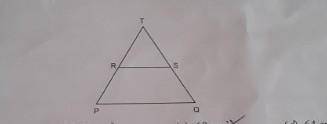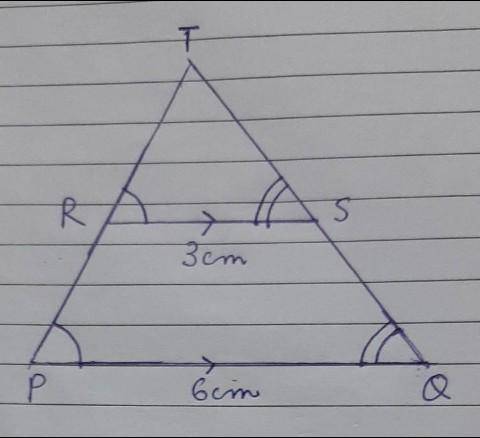
Mathematics, 24.10.2021 23:50 von1144
12. In the given figure, RS is parallel to PQ, If RS = 3 cm, PQ = 6 cm and ar(∆TRS) = 15cm³, then ar (∆TPQ) = ? (a) 70 cm² (b) 58 cm² (c) 60 cm² (d) 64 cm²


Answers: 2


Another question on Mathematics

Mathematics, 21.06.2019 18:10
Points a, b, and c form a triangle. complete the statements to prove that the sum of the interior angles of triangle abc is 180
Answers: 1

Mathematics, 21.06.2019 20:30
Which expression is equivalent to (4 +6i)^2? ? -20 + 48i 8 + 12i 16 - 36i 20 + 48i
Answers: 1

Mathematics, 22.06.2019 01:40
Agroup of student volunteers participates in a study designed to assess several behavioral interventions for improving output in a repetitive task. prior to the beginning of the study, all volunteers unknowingly observed, and their output is measured. at the beginning of the study, prior to any intervention, the volunteers perform the same task under the observation of a study administrator, and their overall output increases. which of the following terms describes this phenomenon? a. simpson's paradox b. hawthorne effect are d. novelty effect d. pygmalion effect e. observer-expectancy effect
Answers: 1

Mathematics, 22.06.2019 03:00
The sum of four times a number and three is two times the number minus twenty nine
Answers: 2
You know the right answer?
12. In the given figure, RS is parallel to PQ, If RS = 3 cm, PQ = 6 cm and ar(∆TRS) = 15cm³, then ar...
Questions




Mathematics, 09.06.2021 01:00






Mathematics, 09.06.2021 01:00




Mathematics, 09.06.2021 01:00



Biology, 09.06.2021 01:00













